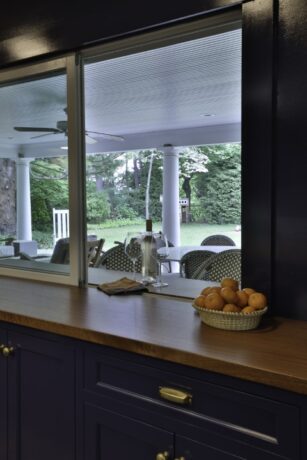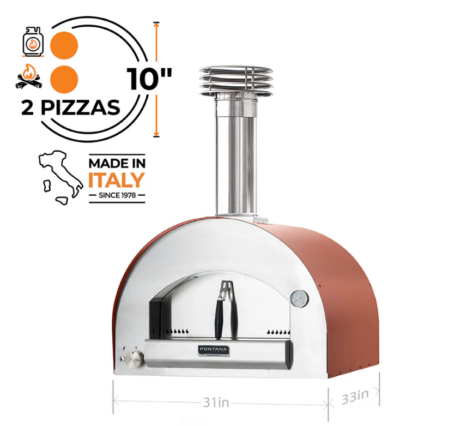Outdoor Kitchen Design: Insights & Inspiration
Outdoor kitchens are no longer just a luxury—they’ve become essential for homeowners who value stylish, functional outdoor living. From hosting dinner parties and weekend barbecues to enjoying a quiet evening under the stars, an outdoor kitchen expands your lifestyle while adding long-term value to your home.
At JWH Design & Cabinetry, we’ve seen growing demand for well-designed outdoor kitchens throughout Westchester, Fairfield, and beyond. Homeowners want spaces as beautiful and practical as their indoor kitchens—and we know how to deliver just that.
Why Outdoor Kitchens Matter More Than Ever
The COVID-19 pandemic shifted how people use their homes. Families turned to outdoor spaces for entertaining, cooking, and connecting. According to the NKBA Luxury Outdoor Kitchen Report, this trend hasn’t faded—in fact, demand for well-designed, functional outdoor kitchens has only increased.
Whether you’re considering help with outdoor kitchen design for your terrace in Rye, NY, a poolside bar in Scarsdale, or a tucked-away terrace in Greenwich, the same design principles apply.
Five Essential Practices for Designing a Luxury Outdoor Kitchen
1. Create a Seamless Indoor-Outdoor Connection
Your outdoor kitchen shouldn’t feel like an afterthought. It should feel like a natural continuation of your home’s visual and functional style. One of the most impactful ways to achieve this is by creating aesthetic continuity between indoor and outdoor spaces.
At JWH, we help clients establish seamless flow by carefully coordinating cabinetry finishes, hardware, countertops, and layout details across both environments. For example, suppose your indoor kitchen features a painted shaker-style cabinet in a soft white or neutral taupe. In that case, we might echo that same tone or profile outdoors using weather-resistant finishes. Or, if your countertops are a warm-toned quartz or marble, we’ll help source outdoor-rated options that match tone and texture.
We also consider how your interior opens to your patio or backyard. A well-aligned transition point, such as French or sliding doors that open directly to the outdoor kitchen, can make the space feel like one cohesive zone. Carrying the same flooring material, backsplash pattern, or lighting fixture style from inside to outside strengthens the connection even further.
Even subtle design decisions, like choosing cabinet hardware with a similar finish (brushed nickel, matte black, brass) or echoing the same drawer profiles, can make your outdoor kitchen feel integrated, rather than separate.
This intentional coordination does more than look great. It also signals thoughtful design and adds resale value, especially in competitive luxury markets like Rye, Scarsdale, and Greenwic,h where sophisticated indoor-outdoor living is a priority for buyers.

2. Design for All Seasons: Extend Outdoor Living Beyond Summer
A well-designed outdoor kitchen shouldn’t be limited to warm-weather use. With the right structural and design elements, your patio can easily become a three- or even four-season living space, dramatically increasing the return on your investment.
At JWH, we incorporate innovative design features that make year-round use both practical and comfortable, including:
-
Covered zones and pergolas: These provide shade in the summer and shelter from rain or snow, while framing the space architecturally.
-
Built-in infrared heaters and radiant flooring: These warming elements make a big difference during chilly fall evenings or early spring days.
-
Wind protection: Strategically placed privacy walls, planters, or retractable screens help block strong breezes without closing off the space entirely.
-
Layered outdoor lighting: Task lighting, accent lights, and ambient illumination make the space usable after dark while enhancing mood and visibility.
In the Northeast, where winters can be unpredictable, many of our Westchester and Fairfield clients have told us that their covered outdoor kitchens with heating became unexpected favorites during the off-season — ideal for tailgates, quiet dinners, or even holiday entertaining.
3. Optimize Layout and Workflow for Outdoor Cooking Success
Just like indoor kitchens, your outdoor kitchen’s layout and flow are significant factors in how enjoyable the space is. A poorly planned design can lead to traffic jams, awkward cooking zones, and frustration, especially when hosting guests.
At JWH, we approach outdoor kitchen design precisely as any high-end interior renovation. We carefully consider how each key element works together, including:
-
Grill or cooktop zone: Positioned with ventilation in mind, but close to prep and serving areas.
-
Prep space includes a counter surface, trash access, and an optional sink. It is ideally placed between cooking and serving.
-
Refrigeration and storage: Designed to minimize unnecessary back-and-forth to the main house.
-
Bar and seating: Arranged to encourage conversation without crowding the chef.
4. Use Durable, Weather-Resistant Materials That Last
Unlike indoor kitchens, outdoor spaces are exposed to sun, rain, wind, and fluctuating temperatures year-round. That’s why choosing the right materials is not just a design decision—it’s a performance necessity.
At JWH, we specify outdoor cabinetry built from marine-grade materials, powder-coated aluminum, or stainless steel to ensure maximum durability in even the harshest weather conditions. These materials resist moisture, UV fading, and warping, making them ideal for homes in coastal or seasonal climates like Westchester County, Fairfield County, and the Eastern Seaboard.
Regarding work surfaces, we recommend sealed natural stone, engineered quartz formulated for outdoor use, or porcelain countertops. These finishes are beautiful, refined, and withstand extreme heat and cold without cracking, staining, or deterioration. Many clients choose finishes that mirror their indoor countertops for a consistent, elegant look.
We also work with manufacturers specializing in outdoor-rated cabinetry hardware, including weather-sealed drawer glides, corrosion-resistant hinges, and lockable components for added security and longevity.
By carefully curating every surface, panel, and hardware component, we ensure your outdoor kitchen looks stunning on day one—and still functions flawlessly years later with minimal maintenance.
Whether your kitchen is exposed to full sun or tucked under a covered pergola, we tailor every selection to your environment and usage goals. This is what makes JWH cabinetry not only custom, but custom for the outdoors.
5. Invest in Features That Fit Your Lifestyle

Whether it’s a pizza oven, beverage fridge, or hidden trash pullout, your outdoor kitchen should reflect how you cook and entertain. We’ll help you prioritize features that suit your lifestyle and investment goals.
Custom Cabinetry for Outdoor Kitchens
JWH Custom Cabinetry isn’t just for indoor kitchens. We design and build outdoor cabinetry in our own Pennsylvania millshop using weather-resistant finishes and joinery. Every piece is tailored to your space, appliances, and layout.
We collaborate with homeowners and contractors to coordinate installation, grill cutouts, and finishes that withstand the elements while matching your aesthetic.
Start Planning Your Outdoor Kitchen with JWH
Now is the perfect time to start if you’re considering an outdoor kitchen. The JWH Team brings decades of experience in space planning, custom cabinetry, and outdoor kitchen design across Westchester and Fairfield counties.
Contact us today to schedule your consultation, and let’s bring your outdoor vision to life.
FAQs About Outdoor Kitchens
Do outdoor kitchens add value to a home?
Yes! A well-designed outdoor kitchen can boost resale appeal and has a strong return on investment, especially in high-end markets like Westchester and Fairfield counties.
Can I use an outdoor kitchen year-round in New York?
With proper design — including covered zones, heaters, and durable materials — outdoor kitchens can be used well into fall and even during mild winters. You can get creative with outdoor drapes that can be pulled closed for extra insulation and light protection.
Do I need permits for an outdoor kitchen?
It depends on your town and whether plumbing, gas, or electrical lines are involved, but my local building departments will require detailed plans to be submitted for approval. We help coordinate those details during the design process.
Common Outdoor Kitchen Mistakes to Avoid
- Using indoor cabinetry outdoors: Moisture and temperature swings will destroy MDF or melamine cabinets. Proper cabinet construction is critical for long-term durability.
- Skipping proper ventilation: Grills and appliances need airflow for safety and performance. Ensure the cooking area is not positioned too close to the house or overhangs to trap the smoke in the living areas.
- Underestimating lighting needs: Evening use requires task and ambient lighting, especially near prep zones. LED lighting is fabulous and flexible for creating ambience and functional work areas.
